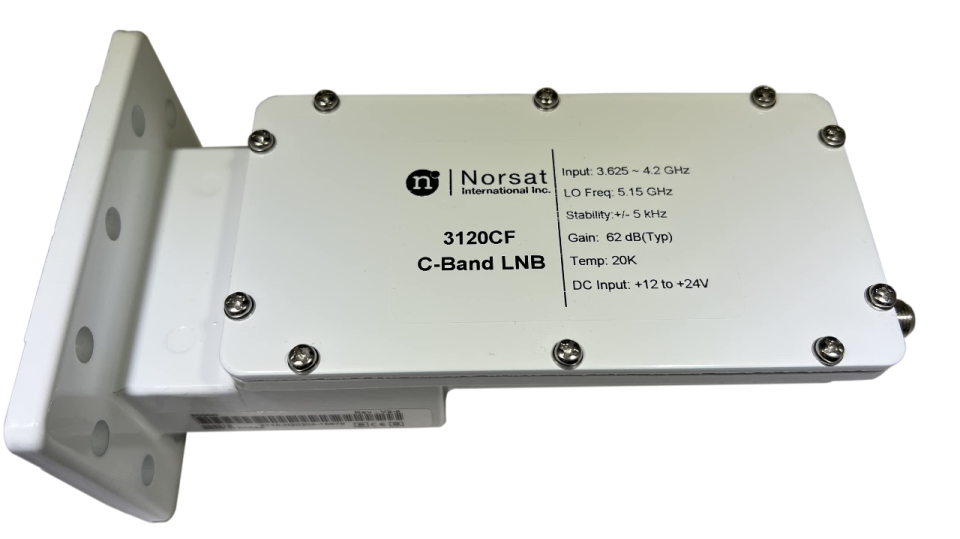
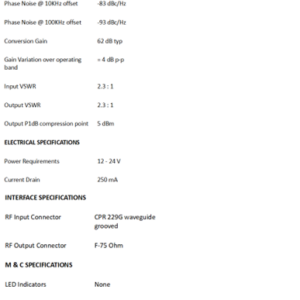
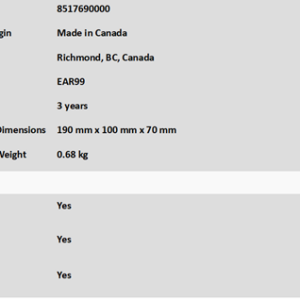

3120 High Stability PLL C-Band
The Norsat 3120CF C-Band PLL LNB has a local oscillator frequency of 5.15 GHz and operates from 3.625 to 4.20 GHz. The 3120CF LNB offers a 20K noise temperature configuration. This high-stability Norsat PLL C-band LNB has a CPR229 waveguide input and provides local oscillator stability of ±5 kHz. F-connector, L-Band RF Output 950 – 1750 MHz. Conversion Gain: 62.0 dB
Application
3.625 to 4.2 GHz, VSAT, Tx/Rx, TVRO, Maritime
Download specification sheet
3000C-Spec-Sheet
SMW Ku LNB 10.70-12.75 GHz WDL ULP Dual & Quattro
SMW Wide band Ku band Lnb

Description
• External or Internal reference models
The Swedish Microwave Ku-Band LNB is based on a well proven technology platform. The product is designed to support reception of the full Ku-Band 10.70-12.75 GHz with one LO.
It comes with Ultra Low Phase Noise as standard to meet the requirements for reception of DVB-
S2X (professional profiles), N3, and N4 signals.
Can be ordered as a Single polarisation LNB or as a Quattro LNB for both Horizontal and Vertical
polarization, including OMT and weather protection case.
Ultra Low Phase Noise (ULP) is recommended* for:
DVB-S2: – Narrowband 8PSK 8/9 and 9/10 FEC- 16 APSK or higher modulation type (any bandwidth)-
All applications with “Pilot Off”
DVB-S2X: All “MODCODS” and symbol rates
NS3/NS4: All “MODCODS” and symbol rates
Download specification sheet
Ku_LNB_10.70-12.75_GHz_WDL_ULP_Dual_and_Quattro_rev2401
Ku_LNB_10.70-12.75 GHz_WDL_drw_rev2401
SATCOM RECEIVER
Frequency: 2200 ~ 2700
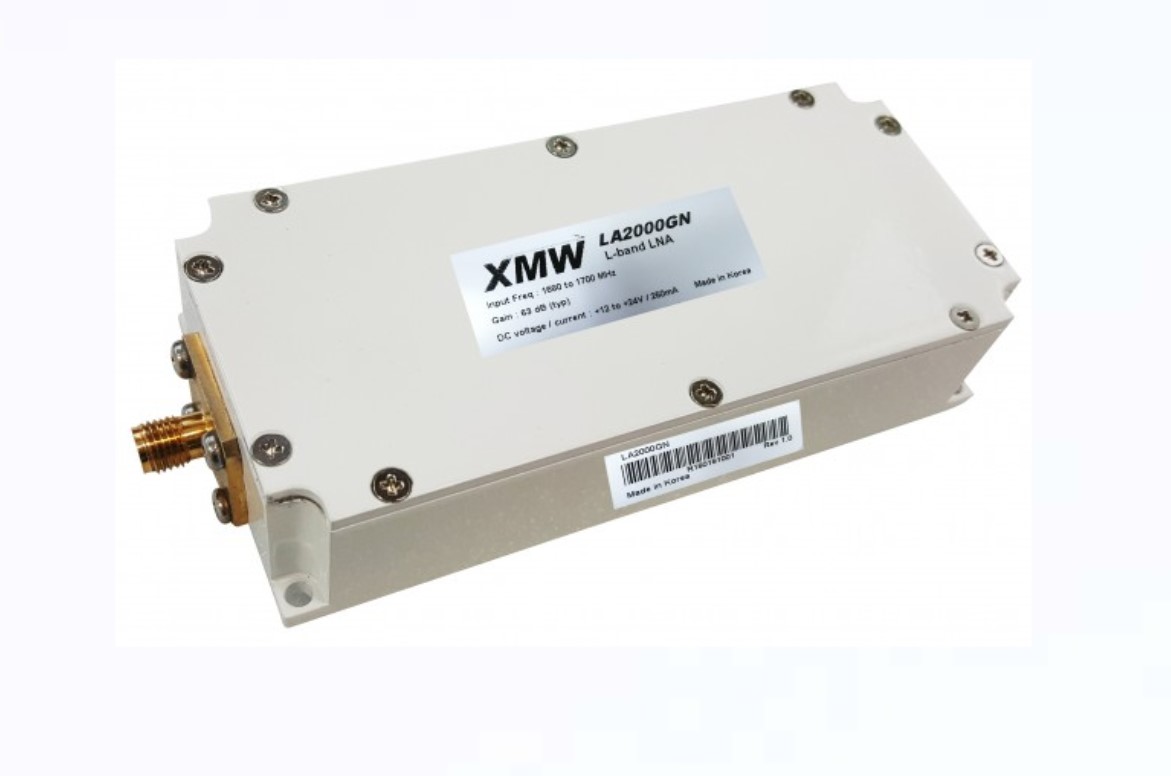
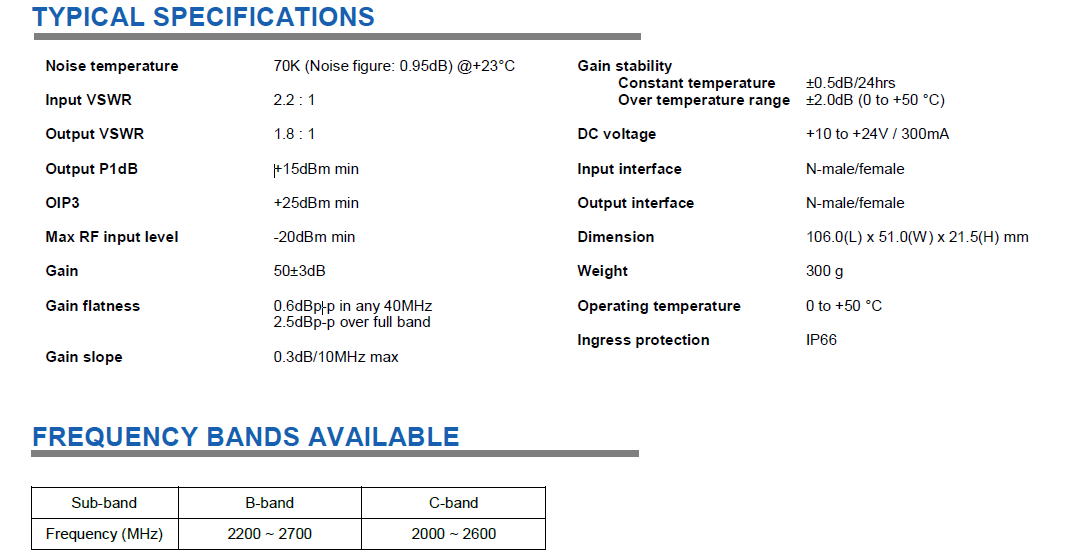
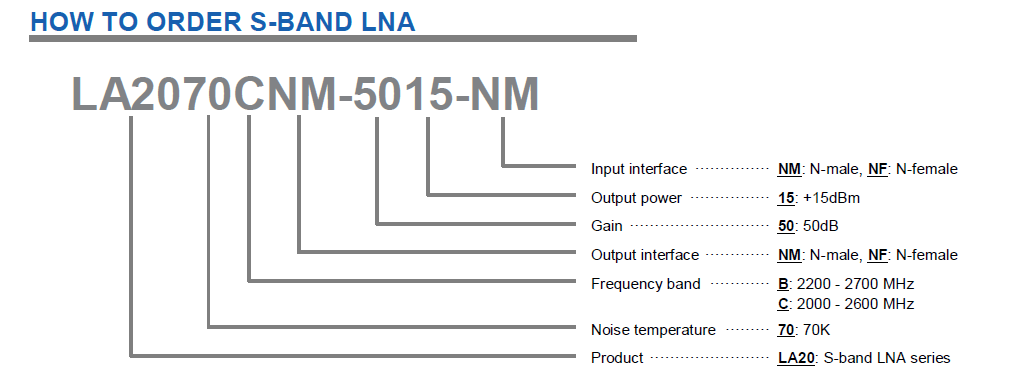
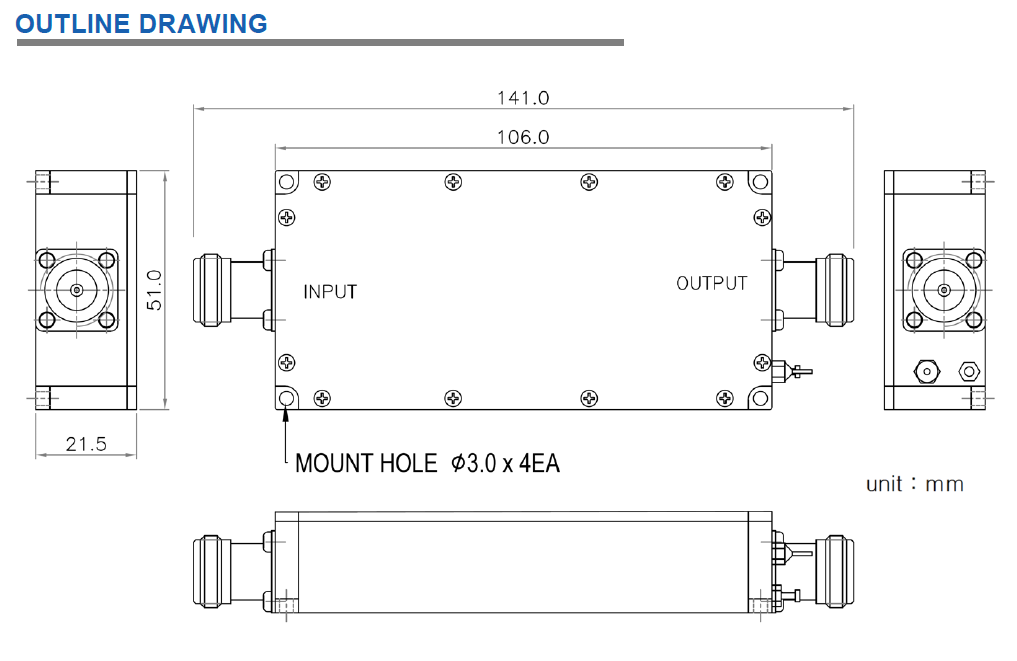
Download Specification Sheet
S-band-XMW LNA LA2070N-5015-N_V1.0_2407-1
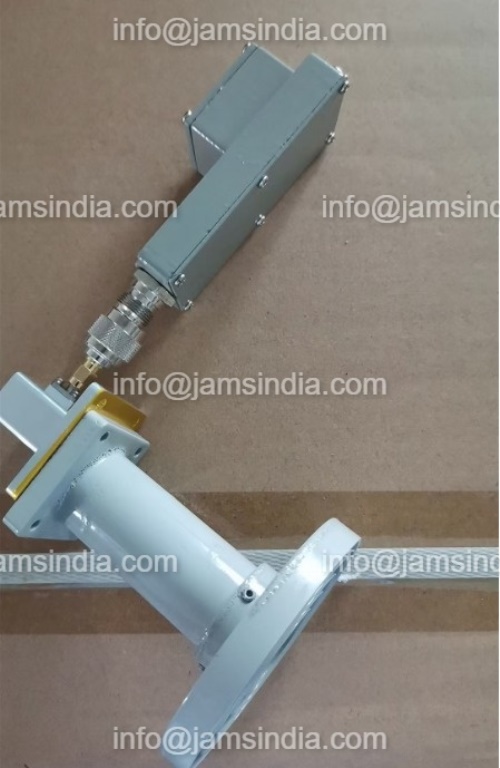
Specification
* Customized PLL Super Strong Signal Special S-Band LNB/Lnbf for Project with Low Noise.
* S-band Lnb Frequency range: 2.2 to 2.9 GHz (can select).
* S-band-feedhorn Frequency range: 2.2 to 3 GHz.
* Choose Frequncy: 2.3-2.7/2.2-2.7/2.5-2.9/2.3-2.9 MHz.
* LO: 3650/3750/3850/3950Mhz
Specification
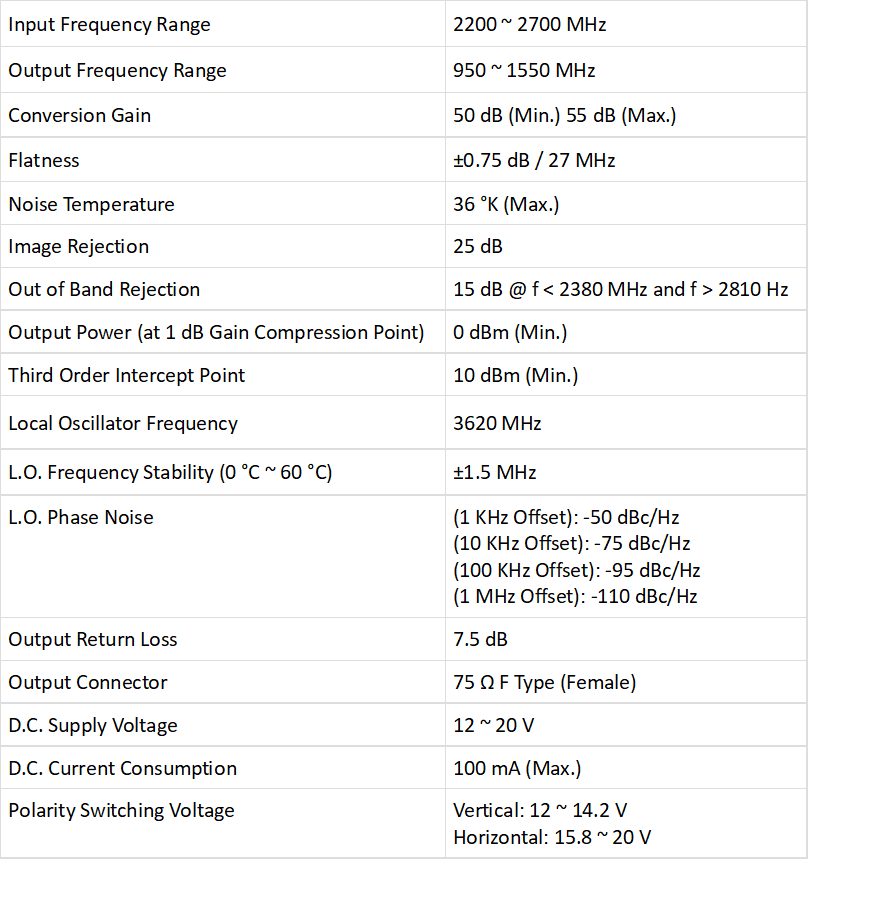
Download S-band feed-horn Specification
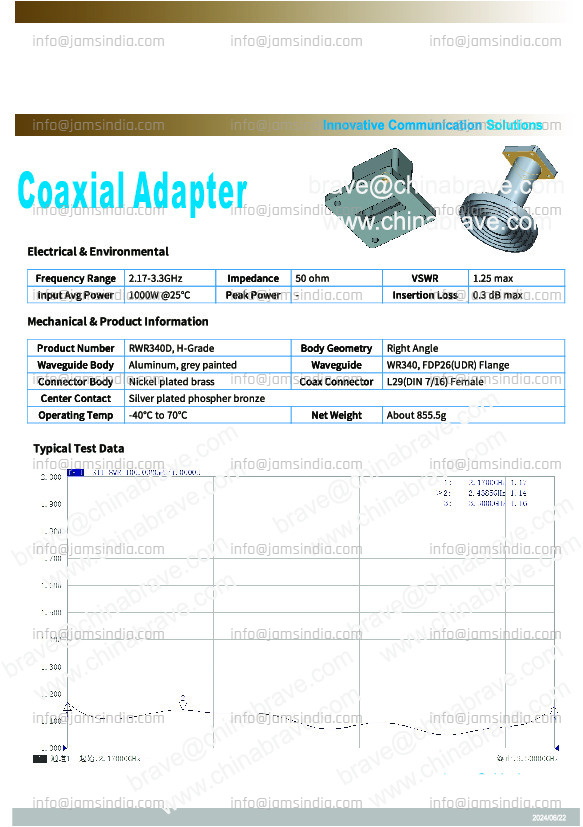
S-Band MMDS LNB
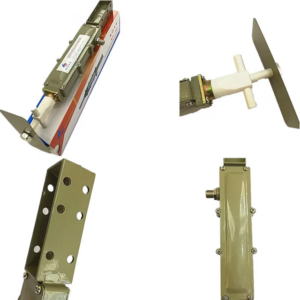
Technical Specification
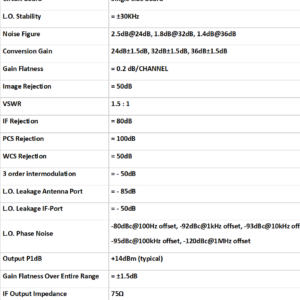
Gardiner C-Band Lnb
17K Gardiner c-Band Lnb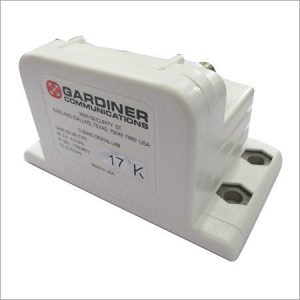
Gardiner 17K C-Band with Single-Polarity-High-Quality-LNB. It will receive an uninterrupted signal from frequency 3.4 GHz to 4.2 GHz. Most recommended product from the group of special 3.4 GHz to 4.2 GHz.
Specification:
Input Frequency: 3.4 to 4.2 GHz
L.O.-Frequency: 5150MHz (±500 MHz)
Output Frequency: 950MHz to 1750MHz
L.O.-Leakage Input Port: 45dBm
L.O. Stability: ±1.5MHz (-40 centigrade to +70 centigrade)
Noise Figure: 17°K typConversion
Gain: 65dB typ
Gain Flatness: ±1 dBm (max)
Norsat 8520R C-band Lnb
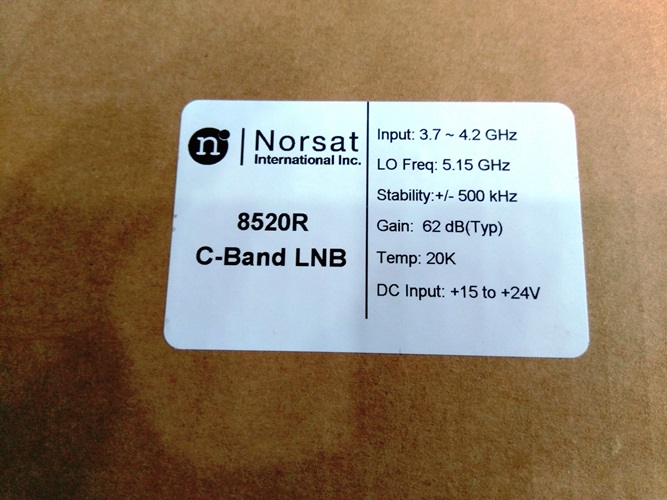
Specification:
Norsat 8520R C-band DRO LNB
Model: • Norsat 8520R
Input Frequency: • 3.4 – 4.2 GHz
Local Frequency: • 5.15 GHz
Local Stability: • ±500 kHz
Noise Temperature: • 20K
Output Frequency: • 950 – 1750 MHz
Phase Noise: • -65 dBc/Hz @ 1 kHz
• -80 dBc/Hz @ 10 kHz
• -95 dBc/Hz @ 100 kHz
Input VSWR: • 2.0:1
Output VSWR: • 2.2:1
Gain: • 64 dB
Output P1dB • 8 dBm
Power • 12 – 24V DC supplied through center conductor of IF cable
Current Drain • 130 mA
Input Waveguide • CPR 229G
Temperature Range • -40°C to +60°C
Dimensions • 7.1 x 4.0 x 2.8 Inches
Weight • 15 oz
Made in Korea
Download specification sheet
Norsat 8000r_lnb
Gardiner C-Band 5G Filter LNB
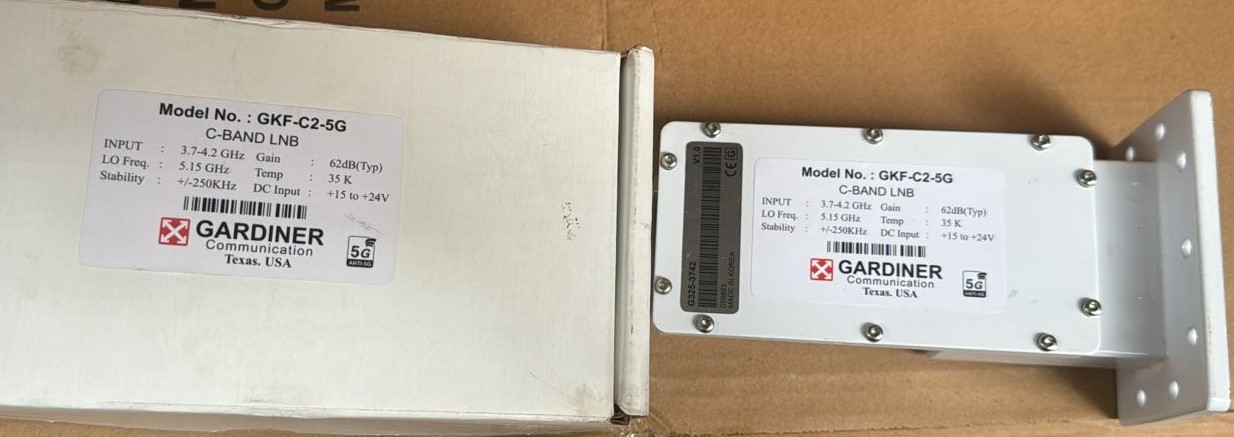
Description
The Gardiner C-Band TI and 5G Filter LNBF is a high-quality low-loss broadband filter that is a great way to stop any interference and protect your wireless connection. This filter can be used with a wireless router or a cordless phone. It has a high-density polyethylene coating that is both water-resistant and impact-resistant, making it durable and reliable.
Technical Specifications:
Input : 3.7-4.2 GHz
LO Freq. : 5.150 GHz
Stability : +/-250KHz
Gain : 62dB (Type)
Temp : 15K
DC Input : +13V to +24V
Extended C-Band 5G Filter LNB
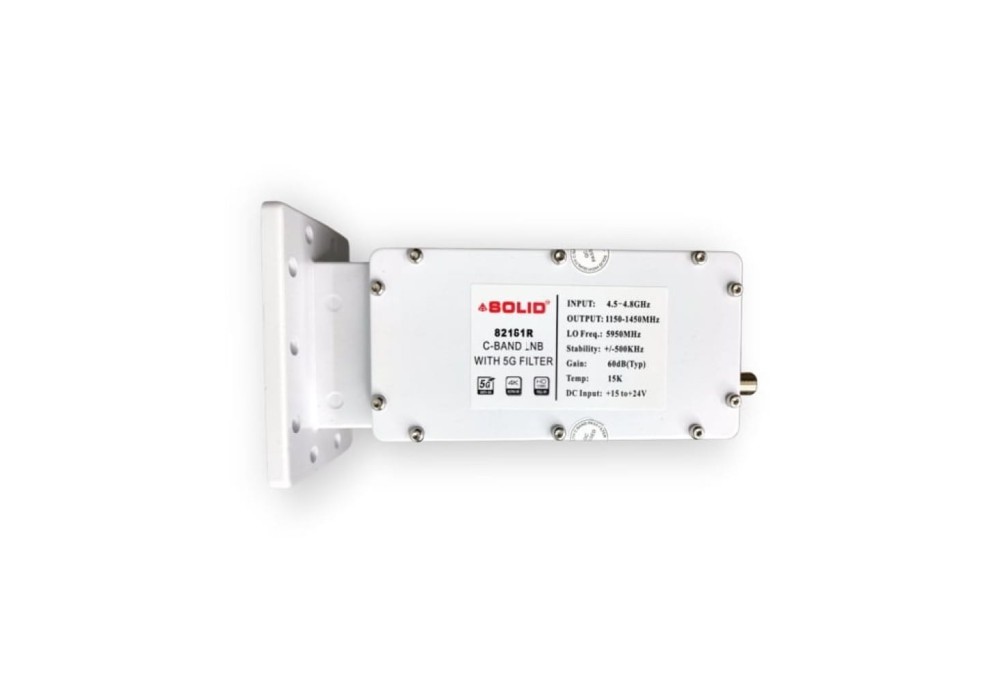
Input Freq. (GHZ) – 4.5~4.8 GHz
Output Freq. (MHz) – 1150-1450 MHz
L.O. Freq. & Stability – 5.950 GHz+/- 500KHz
Noise Temp. (@+25C) – 30K Max
Input VSWR – 2.5:1 Max
Image Rejection – 45 dBc min.
Conversion Gain – 65dB typ. 55dB min. 70dB max.
Output VSWR – 2.5: 1 max.
Gain flatness – 4 dBp-p max.
Gain ripple – +/- 0.5 dB max.
1dB gain compression point – +5 dBm min.
Output impedance – 75ohms
Leakage {@input port) – -45dBm max.
Phase Noise – -65dBc/Hz @ 1KHz Offset
-80dBc/Hz @ 10KHz Offset
-95dBc/Hz @ 100KHz Offset
Power Supply – 012 to +24V DC
Required Current – 150 mA max.
Operating temperature – -40’C to +60’C
Storage temperature – -40’C to +80’C C33
Relative Humidity – 0% to 95% RH
Input waveguide flange – WR-229
If output connector – – F-Type female
Weight – 575g
Tested in :
Tested LNB on Bangabandhu1 Satellite for Extended C-Band Signals.
Quattro Ku Band Lnb

Specification
Quattro Lnb ARLI OR OPTICUM
Input Frequency Range:
10.70 – 12.750 GHz
Output Frequency Range:
950-2150 MHz
Number of out 4 – VL, VH, HL, HH
LO Frequency 9.75/10.60 GHz
Feed Diameter – 40mm
Noise Figure – 0.1dB
Operation Temperature: -30C UP TO 70C
The Quattro LNB provides four outputs, each with a single band/polarization specific to that output.
The band/polarization available at each output is fixed at the time of manufacture. It is not possible to switch the band/polarization with a tone or switching voltage.
A Quattro LNB is normally used to feed a large distribution system. A single dish with a Quattro LNB fitted and a multi-switch (or IRS) is able to feed anything between 4 and 100 locations.
The multiswitch (or IRS) is able to provide any of the input signals at each output, depending on a tone/voltage sent up the cable by the receiver at each location. It’s as though the receiver at each location has it’s own dedicated LNB.
The outputs on a multi-switch (or IRS) are able to be controlled with a 22Hz tone and switching voltages in the same way that the outputs from normal universal LNB can be, i.e. to change band and polarisation.
The satellite receivers in each of the locations behave as though they are connected to their own dedicated dish and LNB, but in reality are just connected to a multi-switch (or IRS) output.
Quattro LNBs are considered to have a better life than quad LNBs as they are not being continually switched.



























